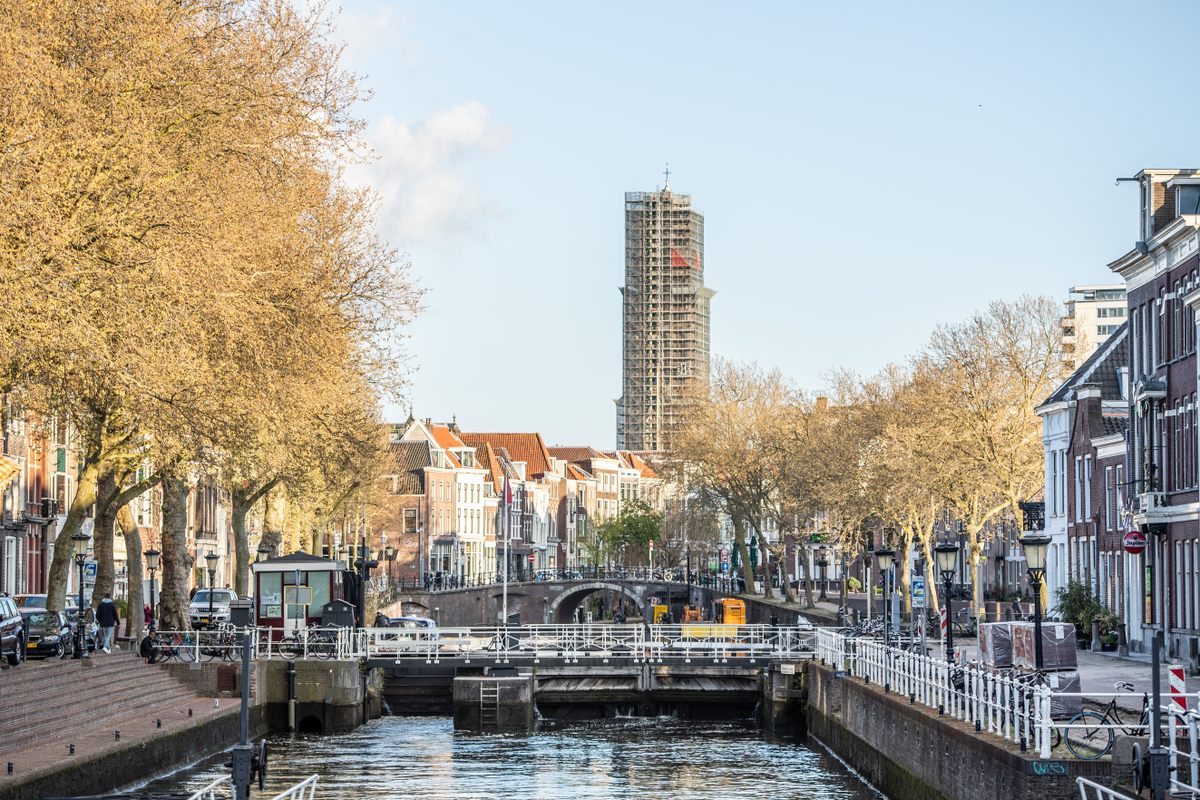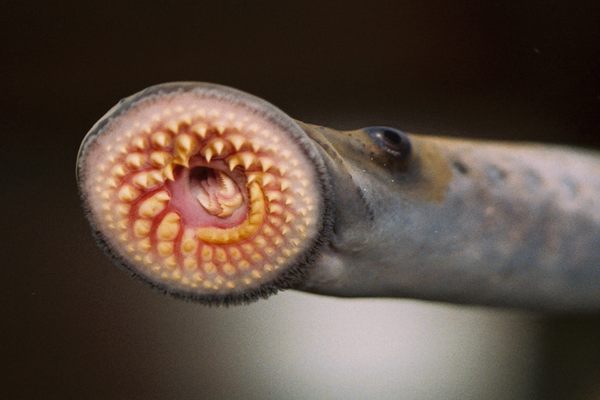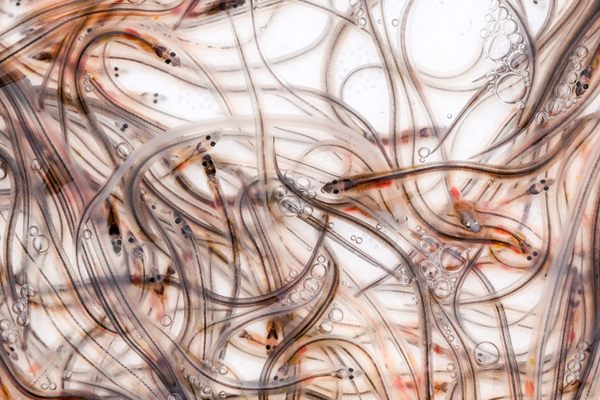Ring the ‘Fish Doorbell’ To Help Fish Migrate in the Netherlands
Utrecht’s Fish Doorbell has helped thousands of fish swim upstream to reproduce.
Retired software distributor Daan van Rooijen grew up fishing in the ponds and canals of Amsterdam, catching his first fish at the age of five. So, when he recently glimpsed a very large, rare Wels catfish in the waterways of Utrecht, a city 25 miles south of Amsterdam, van Rooijen felt some of the old excitement of reeling in a big catch.
This time, though, instead of hauling the trophy fish to shore, van Rooijen courteously rang a virtual “doorbell” on the catfish’s behalf, prompting a worker to open a canal lock and allowing the fish to pass through the waterway unscathed. van Rooijen will do this repeatedly throughout the spring and summer months, and sometimes he’ll go onto Facebook to tell his friends about it. These days, it’s safe to say van Rooijen is the one who is hooked.
This might sound like the start of an especially convoluted knock-knock joke, but it is a serious endeavor for the city of Utrecht, the Netherlands’ fourth-largest city that’s brimming with locks and cannals. The municipality, in conjunction with the water management and flood control administrations waterboard, has created an underwater webcam and interactive “Fish Doorbell.” The doorbell project enlists the public in helping fish migrate through the various dams and locks in the city’s canals and rivers. Apparently, if you give a person a fish, you feed them for a day, but if you teach them to ring a fish doorbell, you save fish migration in a small Dutch city.
“Watching the Fish Doorbell is a bit like fishing, but in a more animal-friendly way,” says van Rooijen, who resides in the nearby town of Alkmaar, about 50 miles north of Utrecht. “And it can be equally exciting; for instance, when a four-foot-long pike suddenly swims into view and flashes its teeth.”
Every spring, fish travel from the Vecht, a branch of the Rhine River southeast of Amsterdam, to the Kromme River, which extends from Utrecht to the southeast. In the shallower water of the Kromme, the fish spawn and reproduce. Fish are a natural and valuable part of the ecosystem of Utrecht’s waterways, but manmade structures such as dams and locks frequently disrupt their migratory patterns. The Weerdsluis, or Weerd Lock, is one such obstacle to migratory fish.

For ecologist Mark van Heukelum, the inventor of the Fish Doorbell, the device began as a simple logistical challenge. During a public event aimed at celebrating local marine life through poetry, art, and community education, van Heukelum found himself face-to-face with someone who could make a real difference.
“I was sitting there with the Weerdsluis boat lock manager and I was telling him about the challenges fish face when they are migrating, I mentioned that this boat lock was actually an obstacle for them,” van Heukelum says. “We could literally see the fish swimming there at the boat lock. I told him that this boat lock should be opened during the spring for the fish.” The boat lock manager said he would happily open the lock, but he’d need to know when there were fish waiting at the lock since they aren’t visible from land. That’s when van Heukelum got the idea for an underwater webcam that could be surveilled around the clock. But he couldn’t do it alone.
“I knew I wasn’t going to be able to watch the camera for 24 hours a day,” says van Heukelum. “So, I thought I’d reach out to the public, see how many people would be willing to do this for just a few minutes a day. It occurred to me we could do this together.”
After outfitting the webcam with a doorbell system and an accompanying website, van Heukelum waited, not knowing what to expect.
He was pleasantly surprised. In its first spring season in March 2021, the Fish Doorbell, or Visdeurbel, was rung more than 100,000 times by people all around the world.
Its feel-good appeal is incalculable. In a post-pandemic world where doorbell cams are most commonly deployed against unwanted solicitation or Amazon delivery porch pirates, the Fish Doorbell offers a cynicism-free opportunity to practice everyday altruism. The camera also serves as a way for ecologists in Utrecht to identify and observe the native marine wildlife in the area.
“The Fish Doorbell has mitigated one big challenge, which is the obstacle of the boat lock, but perhaps an even bigger challenge is that there is still a lack of habitat in the canals. They are just walls with water,” van Heukelum says. “I also refer to them as ‘blue deserts.’ The fish can enter the city, but they have very little reason to stay.” With a scarcity of food and few hiding places, fish living in the canals are exposed to the risk of predation, van Heukelum says.
“I’ve urged the municipality and the water board to track what species appear on the camera, so we can improve their habitat,” he said.
Efforts such as the Fish Doorbell are part of a growing recognition of the importance of migratory fish in maintaining healthy waterways. In the United States, innovations such as the compulsively watchable “Salmon Cannon,” which uses a pneumatic tube to “shoot” fish over dams, have similarly sought to circumvent manmade barriers to migration. According to Vincent Bryan III, CEO of Whooshh Innovations, the company that invented the device, the Salmon Cannon’s core technology was originally developed to move fresh fruit, such as apples, gently and without bruising as part of the mechanization of tree fruit harvesting.
“It quickly became apparent that our technology could move any perishable or fragile object gently, yet quickly, in our patented transport tubes,” says Bryan. “Having grown up in the Pacific Northwest and as an avid fisherman, it was not a big leap to recognize we had developed the perfect vessel to transport fish safely and without stress over barriers and dams at an affordable cost.”
Spring 2023 marks the Fish Doorbell’s third season, and interest doesn’t seem to be waning. The Doorbell is now the topic of a Facebook discussion group, where van Rooijen serves as a moderator. There, visitors compare notes and share photos of their webcam sightings. Among the sightings are perch, bream, pike, and eels, along with “alien” species such as crayfish and crabs, which are not native to the area. Van Rooijen has entertained his fellow webcam watchers with his astounding footage of a grebe—a bird whose high-speed dives have earned it the nickname “water-witch”—plunging to the bottom of the approximately seven-foot-deep canal with its chick. And although he didn’t get to take a bragworthy photo of his recent catfish “catch,” van Rooijen did get ecological kudos on his find.
“Both the anglers in our Facebook group and the ecologists who run the Doorbell were very excited about that,” he said. “These fish are quite rare, and none had ever been observed in the city of Utrecht.”

The Fish Doorbell has also caught the attention of Thunder Keck, a linebacker for the Stanford University Cardinals football team and a graduate student in sustainability. Keck decided to use his TikTok account, which boasts more than 800,000 followers, to profile the unique technology through a video as part of his “Useful Sites” series.
“[The Fish Doorbell] not only helps the environment, but also increases community buy-in and awareness,” says Keck. “While the stream is arguably a novel solution to the problem, it also does something really important by getting people involved.”
It seems unlikely that the public enthusiasm for the Fish Doorbell will flag any time soon, but if it should, graduate students Simon Van Eeden and Wounter de Leeuw have been working toward automating the doorbell. Using computer imaging, the two have trained a program to identify when a fish may be waiting at the lock.
Although their project was an academic success, Van Eeden and Wouter did not get the chance to apply their automation approach to the real-time livestream before the doorbell season ended for the year. However, they now know that automation is a real option for the future.
“We’re thinking at some point, it won’t be a big topic anymore, and people will forget to do it,” says van Eeden. “When people stop clicking the button, being able to automate it will be helpful.”
As the inventor of the doorbell, van Heukelum says he’s open to the idea of automating the doorbell in the future, but he’s hoping that day won’t come any time soon.
“I do appreciate the value of automation, but I just think it’s beautiful when the public comes together to do something good,” says van Heukelum. “I’m hoping when spring comes people will be excited to ring the doorbell again.”















Follow us on Twitter to get the latest on the world's hidden wonders.
Like us on Facebook to get the latest on the world's hidden wonders.
Follow us on Twitter Like us on Facebook